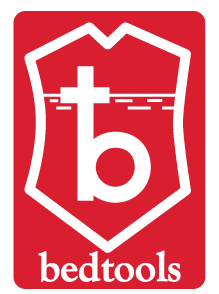class: center, middle, inverse, title-slide # Croisement de données ## DUBii - Module 5 ### Olivier Rué - Matthias Zytnicki ### 2021-03-25 --- # Programme - Présentation des intervenants, organisation - Rappel sur les formats de fichiers - <strong class="tool">Bedtools</strong> <a id='cite-quinlan2010bedtools'></a>(<a href='#bib-quinlan2010bedtools'>Quinlan and Hall, 2010</a>) - TP en mode distanciation sociale .center[  ] --- # Rappels sur les formats de fichiers Format | Contenu ------------- | ------------- FASTA | ? FASTQ | ? SAM/BAM | ? BED/GTF/GFF | ? VCF | ? --- # Rappels sur les formats de fichiers Format | Contenu ------------- | ------------- FASTA | Information de séquence FASTQ | Séquence et qualité de lectures provenant d'un séquençage SAM/BAM | Alignement des lectures sur une référence BED/GTF/GFF | Coordonnées et annotations génomiques VCF | Coordonnées et annotations des variants génomiques --- ## FASTA ```bash >foo ATGCC >bar other optional text could go here CCGTA >bidou ACTGCAGT TTCGN >repeatmasker ATGTGTcggggggATTTT >prot2; my_favourite_prot MTSRRSVKSGPREVPRDEYEDLYYTPSSGMASP ``` ## FASTQ ```bash @SEQ_ID GATTTGGGGTTCAAAGCAGTATCGATCAAATAGTAAATCCATTTGTTCAACTCACAGTTT + !''*((((***+))%%%++)(%%%%).1***-+*''))**55CCF>>>>>>CCCCCCC65 ``` --- ## SAM/BAM - _Sequence Alignment Map_ - Contient les informations des alignements des lectures sur le génome - 2 sections - le header - les alignements - Se manipule avec - <strong class="tool">samtools</strong> <a id='cite-samtools'></a>(<a href='#bib-samtools'>Li, Handsaker, Wysoker, Fennell, Ruan, Homer, Marth, Abecasis, and Durbin, 2009</a>), - <strong class="tool">bedtools</strong> (<a href='#bib-quinlan2010bedtools'>Quinlan and Hall, 2010</a>), - <strong class="tool">Picard tools</strong> <a id='cite-picardtools'></a>(<a href='#bib-picardtools'>Broad Institute, 2018</a>), - ... - Toujours travailler avec le BAM, trié et indexé --- ## SAM/BAM <img src="images/SAM_format.jpg" width="80%" style="display: block; margin: auto;" /> --- ## BED - _Browser Extensible Data_ - Ce sont des formats "d'intervalles". Chaque ligne contient un intervalle de coordonnées génomiques avec au minimum 3 colonnes : ```bash # BED 3 columns #chromosome start end chr1 145 200 chr1 345 500 chr1 600 1000 ``` - Plus d'informations avec 6 colonnes : ```bash # BED 6 columns #chromosome start end name score strand chr1 145 200 i1 0 + chr1 345 500 i2 0 + chr1 600 1000 i3 0 + ``` --- ## BED <img src="images/BED_format.png" width="100%" style="display: block; margin: auto;" /> --- ## GFF - _General Feature Format_ - GFF puis GFF2 puis GFF3 - GFF3 actuellement en vigueur : <a href="http://gmod.org/wiki/GFF3">documentation</a> - Format utilisé pour localiser et décrire toute zone caractéristique d'un génome (ex : un exon) - Un header ```bash ##gff-version 3 ``` - 9 colonnes décrivant des *features* ```bash ctg123 . mRNA 1300 9000 . + . ID=mrna0001;Name=sonichedgehog ctg123 . exon 1300 1500 . + . ID=exon00001;Parent=mrna0001 ctg123 . exon 1050 1500 . + . ID=exon00002;Parent=mrna0001 ctg123 . exon 3000 3902 . + . ID=exon00003;Parent=mrna0001 ctg123 . exon 5000 5500 . + . ID=exon00004;Parent=mrna0001 ctg123 . exon 7000 9000 . + . ID=exon00005;Parent=mrna0001 ``` --- ## GFF3 1. seqid - Nom du chromosome ou scaffold 2. source - Nom du programme utilisé pour générer ce fichier 3. type - Type d'élément (feature). Doit correspondre à l'ontologie <a href="http://www.sequenceontology.org/so_wiki/index.php/Category:SO:SOFA">SOFA</a> <a id='cite-eilbeck2005sequence'></a>(<a href='#bib-eilbeck2005sequence'>Eilbeck, Lewis, Mungall, Yandell, Stein, Durbin, and Ashburner, 2005</a>) 4. start - Début (1-based) 5. end - Fin 6. score - Score décimal 7. strand - Brin + (forward) ou - (reverse). 8. phase - Phase : 0, 1 ou 2 (base du codon) 9. attributes - Liste de paires tag-valeur, par exemple ID, Name, Alias, Parent... ```bash #seqid source type start end score strand phase attributes ctg123 . mRNA 1300 9000 . + . ID=mrna0001;Name=bidou;Parent=gene001 ``` --- ## GTF - Dérivé du GFF - 8 premières colonnes identiques - La 9ème (attributes) doit contenir gene_id ou transcript_id - Spécialisé dans l'annotation des gènes - gene_id obligatoire - transcript_id obligatoire - GTF == GFF2 ```bash chr1 Cufflinks transcript 62948 63887 1000 + . gene_id "ENSG00000240361"; transcript_id "ENST00000492842"; FPKM "0.1133032705"; frac "1.596713"; conf_lo "0.000000"; conf_hi "0.312052"; cov "0.351936"; full_read_support "yes"; ``` -- <div class="alert danger">Attention au parsing du GTF, il y a des espaces dans la 9ème colonne !</div> --- ## VCF - _Variant Calling Format_ - En migration vers _gVCF_ () - Header décrivant le format et l'obtention du fichier - Une ligne par variant (SNV, INSERTION, DELETION...) --- ## VCF <img src="images/VCF_format.png" width="100%" style="display: block; margin: auto;" /> --- ## Système de coordonnées .pull-left[ 0-based: ```bash ACTGACTG 012345678 ``` - BED - BAM ] .pull-right[ 1-based: ```bash ACTGACTG 12345678 ``` - GTF - GFF - SAM - VCF ] -- <div class="alert comment">Les outils font automatiquement la conversion, attention si vous cherchez l'information directement !</div> --- ## BEDTOOLS - Le couteau suisse pour travailler sur des fichiers d'intervalles et croiser différents types de données - Permet de nombreuses manipulations et croisement sur : - BAM - BED - GFF/GTF - VCF .pull-left[  ] .pull-right[ - Documentation : https://bedtools.readthedocs.io/en/latest/ - Tutoriel : http://quinlanlab.org/tutorials/bedtools/bedtools.html ] --- ## Une super documentation ! - Avec des schémas <img src="images/bedtools_intersect.png" width="30%" style="display: block; margin: auto;" /> - Une documentation complète - De nombreux exemples <a href="https://bedtools.readthedocs.io/en/latest/content/tools/intersect.html">Exemple pour l'outil intersect</a> --- ## Performance - Pas de multithreading avec Bedtools - Sur de gros jeux de données, il faut que les fichiers soient triés (de la même manière bien sûr) <img src="images/bedtools_time.png" width="30%" style="display: block; margin: auto;" /> --- ## TP : Données à croiser .pull-left[ * Génome humain : <code>FASTA</code> * Annotation : <code>GFF3</code> * Variants : <code>VCF</code> * Alignements : <code>BAM</code> * Transcrits : <code>GTF</code> ] .pull-right[ <img src="images/croisement.jpg" width="60%" style="display: block; margin: auto;" /> ] -- Ce <a href="https://du-bii.github.io/module-5-Methodes-Outils/seance4/document.html">document</a> vous permettra de suivre pas à pas le TP associé à la suite BEDtools <img src="images/Charge-mentale-1__1_.jpg" width="30%" style="display: block; margin: auto;" /> --- # References <p><cite><a id='bib-picardtools'></a><a href="#cite-picardtools">Broad Institute</a> (2018). <em>Picard Tools</em>. <a href="http://broadinstitute.github.io/picard/">http://broadinstitute.github.io/picard/</a>.</cite></p> <p><cite><a id='bib-eilbeck2005sequence'></a><a href="#cite-eilbeck2005sequence">Eilbeck, K., S. E. Lewis, C. J. Mungall, et al.</a> (2005). “The Sequence Ontology: a tool for the unification of genome annotations”. In: <em>Genome biology</em> 6.5, p. R44.</cite></p> <p><cite><a id='bib-samtools'></a><a href="#cite-samtools">Li, H., B. Handsaker, A. Wysoker, et al.</a> (2009). “The sequence alignment/map format and SAMtools”. In: <em>Bioinformatics</em> 25.16, pp. 2078–2079.</cite></p> <p><cite><a id='bib-quinlan2010bedtools'></a><a href="#cite-quinlan2010bedtools">Quinlan, A. R. and I. M. Hall</a> (2010). “BEDTools: a flexible suite of utilities for comparing genomic features”. In: <em>Bioinformatics</em> 26.6, pp. 841–842.</cite></p>